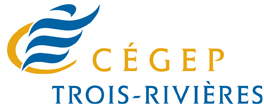Aluminum transformation is an important area of research for a number of Québec industries looking for improvements in molding or casting aluminum alloys.
Dr. Franco Chiesa has set up partnerships with multinational RioTintoAlcan (RTA) and with eight Québec small and medium-sized enterprises from various regions including the Saguenay, Cap-StIgnace, St-Cyprien, Drummondville, and greater Montreal.
RTA sub-contracts its casting-alloys research and development to tap into Dr. Chiesa’s expertise and into the research centre’s materials and resources, such as a low-pressure mold press. Most small and medium-sized enterprises have neither the scientific resources nor the specialty equipment to conduct such research. In return, SME projects allow the CCTT to fine-tune its ability to apply scientific principles to real-world problems.
This hands-on problem-solving is a core element of the Chair’s contribution to teaching in the cégep’s metallurgy department, as research projects involve academic staff either directly or through the supervision of students working on projects. The centre also proposes themes for end-of-studies projects, overseen jointly by a professor and Dr. Chiesa, and hires two student interns a year for 14 weeks. The strong working relationship allows professors to inject concrete examples into their courses, breaking from routine and heightening student motivation.
They also provide more up-to-date instruction on cutting-edge topics. Some of the challenges tackled to date include developing alloys with very high aluminum-copper content, die casting of low-iron alloys, high-production modified heat treatments, and direct-pour sand casting. The Chair also organizes its operations so that students can observe castings as part of their courses. Through projects designed by the Chair, two students won the 2013 and 2014 Prix de la relève (next-generation award) at the REGAL (Regroupement Aluminium) student day.
The benefits for SME productivity can prove spectacular as well. One example is a mold initially designed empirically, then “virtually” modified in a three-phase modeling process that not only improved quality, but also increased casting capacity from 10 to 15 units an hour while using 20 per cent less metal. Results from six research projects have been published in the 2014 and 2015 conference proceedings of the American Foundry Society and the 2014 and 2015 annual convention of the Canadian Institute of Mining, Metallurgy and Petroleum.


